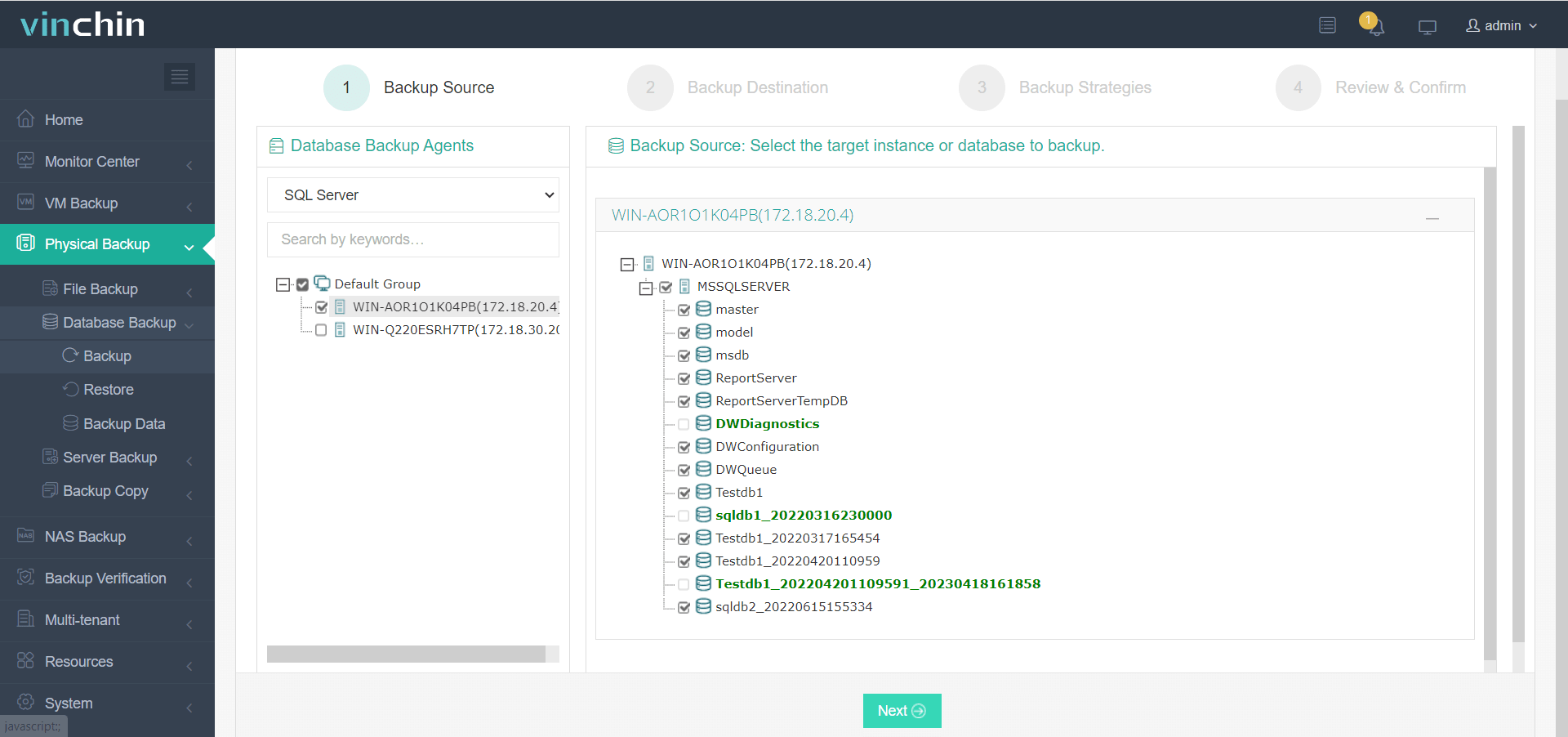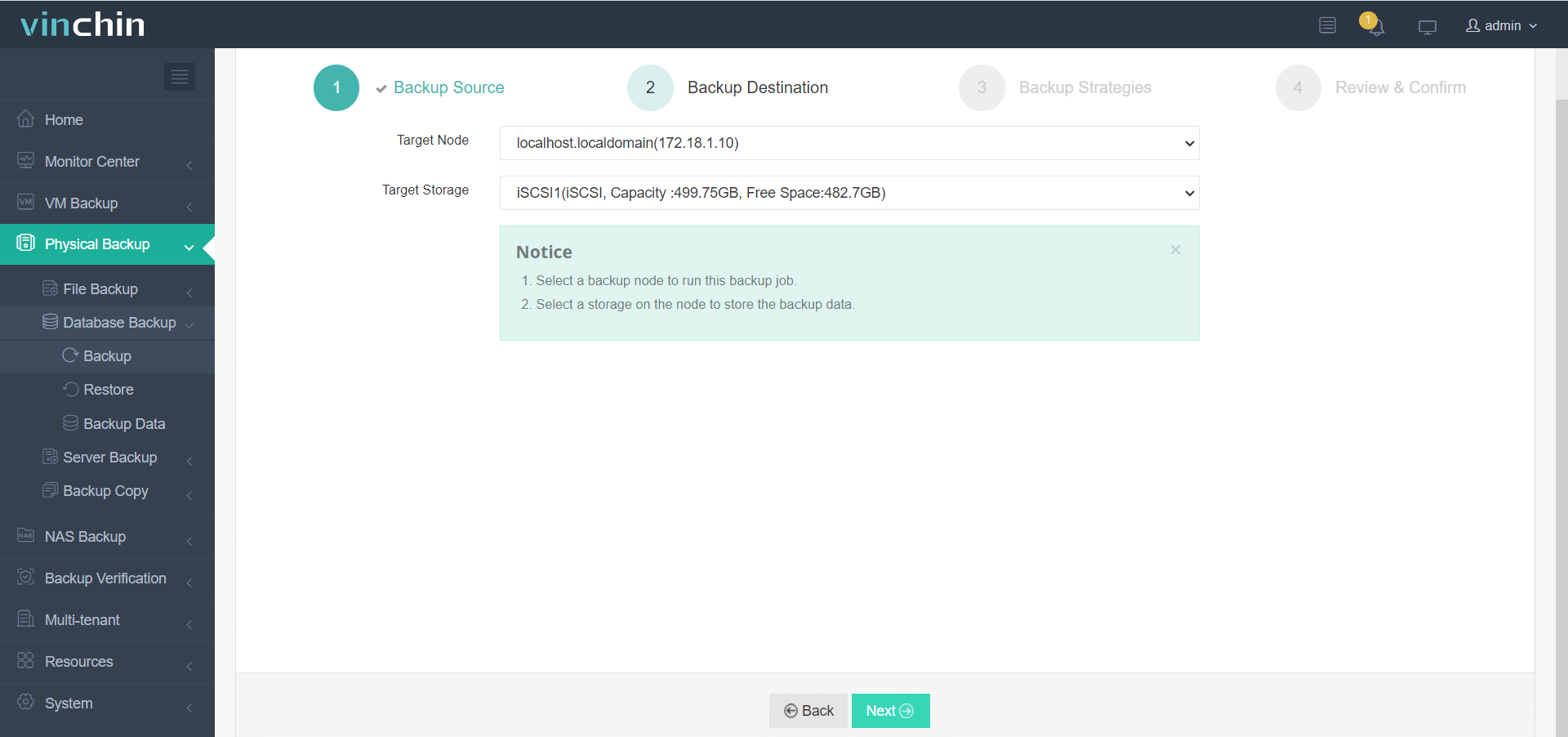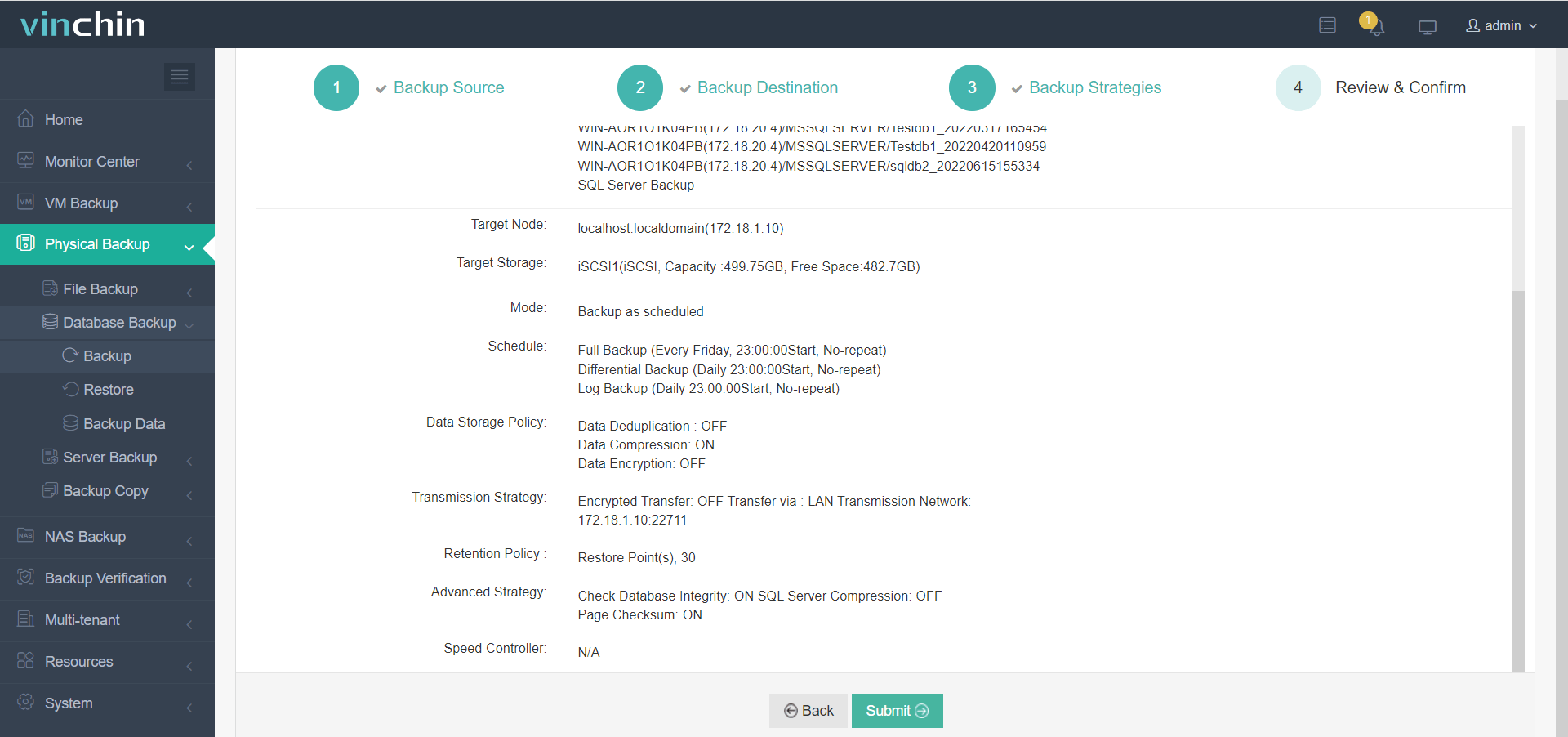-
What Does Shrink Database Mean in SQL Server?
-
Why Shrink Database in SQL Server?
-
Method 1: Shrink Database Using SQL Server Management Studio (SSMS)
-
Method 2: Shrink Database Using T-SQL Commands
-
Method 3: Automate Shrinking with Maintenance Plans or Scheduled Jobs
-
Vinchin Backup & Recovery: Enterprise-Level Protection for Your Databases
-
Shrink Database SQL Server FAQs
-
Conclusion
Have you ever faced a sudden disk space crunch on your SQL Server database? Maybe after an ETL job, a seasonal data purge, or archiving old records? You might expect that deleting large tables or old data would free up disk space right away. But in SQL Server, deleted data only marks space as free inside the database file—the file itself stays large unless you shrink it. In this guide, we’ll explore what it means to shrink a database in SQL Server, when (and when not) to do it, and how to perform this operation safely using different methods. We’ll also discuss risks, best practices, and how to protect your data with Vinchin.
What Does Shrink Database Mean in SQL Server?
Shrinking a database in SQL Server means reducing the physical size of its files by removing unused space. When you delete rows or drop tables, SQL Server marks those pages as free but does not return that space to the operating system automatically. The shrink operation moves active data pages from the end of the file toward the beginning. Once enough empty space accumulates at the file’s end, SQL Server releases it back to Windows. This process can target both data files (MDF/NDF) and log files (LDF).
Shrinking does not compress or reorganize your actual data—it simply reclaims unused disk space. It’s important to understand that shrinking is a physical file operation rather than a logical one.
Why Shrink Database in SQL Server?
Shrinking a database is not something you should do routinely. Most of the time, databases grow over time as new data arrives. However, there are specific cases where shrinking makes sense. For example:
After a one-time purge of large tables or historical records
When dropping many objects at once (like old partitions)
If you’re running SQL Server Express and hit its size limit
When reclaiming disk space is urgent due to storage constraints
If your database will soon grow again—such as after regular batch jobs—shrinking may be pointless and could even harm performance by causing fragmentation. Always weigh the need for immediate free space against long-term health.
Method 1: Shrink Database Using SQL Server Management Studio (SSMS)
The graphical interface in SSMS makes shrinking straightforward for most administrators.
Start by connecting to your SQL Server instance in Object Explorer. Expand Databases, right-click your target database, point to Tasks, then select Shrink followed by Database. The Shrink Database dialog displays both allocated and available free space.
You may choose to enable Reorganize files before releasing unused space (similar to running DBCC SHRINKDATABASE with a target percent), which can help minimize fragmentation but takes longer. Set Maximum free space in files after shrinking between 0–99 percent based on how much headroom you want left.
Click OK to start shrinking. Monitor progress in SSMS’s status bar or Messages pane. This method works best for one-off operations or when you need a visual overview before making changes.
Method 2: Shrink Database Using T-SQL Commands
For automation or scripting needs, T-SQL offers powerful control over shrinking operations.
The main command is DBCC SHRINKDATABASE. Here’s how you might use it:
DBCC SHRINKDATABASE (YourDatabaseName, 10); GO
This shrinks both data and log files in YourDatabaseName, leaving about 10% free space inside each file. Adjust this percentage based on future growth expectations.
To shrink just one file—such as a log file—use DBCC SHRINKFILE along with the logical file name:
DBCC SHRINKFILE (YourDataFileLogicalName, TARGET_SIZE_MB); GO
For extra safety during automation or scheduled jobs, wrap these commands in error handling logic:
BEGIN TRY DBCC SHRINKDATABASE (YourDatabaseName, 10); END TRY BEGIN CATCH PRINT 'Shrink operation failed: ' + ERROR_MESSAGE(); END CATCH
Before running any shrink command:
Make sure you have either sysadmin or db_owner rights.
Do not run shrinks while backups are active—they block each other.
Always verify recent backups exist before proceeding.
T-SQL gives flexibility but demands caution; always test scripts on non-production systems first when possible.
Method 3: Automate Shrinking with Maintenance Plans or Scheduled Jobs
If shrinking must be done regularly—for example after recurring purges—you can automate it using Maintenance Plans or Agent Jobs within SSMS.
Navigate to Management, right-click Maintenance Plans, then choose New Maintenance Plan. Add a Shrink Database Task from the toolbox. In task properties:
Select which databases should be shrunk (avoid system databases like master/msdb).
Set how much free space should remain after shrinking.
Configure scheduling according to business needs—ideally during off-hours when user activity is low.
Alternatively, create an Agent Job that runs your custom T-SQL script at set intervals for more granular control.
However—and this cannot be stressed enough—do not schedule routine shrinks unless there’s an ongoing business requirement. Frequent shrinking leads to heavy index fragmentation and can degrade performance over time. Use automation sparingly and always monitor results closely afterward.
Vinchin Backup & Recovery: Enterprise-Level Protection for Your Databases
Given the inherent risks associated with operations like database shrinkage on platforms such as Microsoft SQL Server—which require robust backup strategies—it becomes essential to deploy professional solutions designed for enterprise environments. Vinchin Backup & Recovery stands out as an advanced backup solution supporting today's mainstream databases including Oracle, MySQL, MariaDB, PostgreSQL/PostgresPro/MongoDB—and especially Microsoft SQL Server—to ensure comprehensive protection across diverse infrastructures.
Key features relevant for safeguarding critical workloads include incremental backup capabilities tailored for efficient storage usage; advanced source-side compression optimized specifically for Oracle and SQL Server environments; flexible batch backup management; multi-level compression options; and granular retention policies such as GFS retention policy support—all working together seamlessly so organizations benefit from reduced storage costs without sacrificing reliability or restore speed during emergencies like failed shrink attempts or unexpected outages caused by administrative tasks gone awry.
Vinchin Backup & Recovery offers an intuitive web console enabling even complex backup workflows through four simple steps tailored specifically for Microsoft SQL Server users:
1. Select source SQL Server database(s),

2. Choose target storage location(s),

3. Configure backup strategies,

4. Submit the job.

Trusted globally by thousands of enterprises—with top ratings across industry platforms—Vinchin Backup & Recovery delivers proven peace-of-mind protection backed by responsive support teams worldwide! Try all features risk-free with our fully functional 60-day trial—click below now!
Shrink Database SQL Server FAQs
Q1: Can I shrink TempDB without restarting my server?
A1: No—the only way to fully reduce TempDB file sizes is by restarting SQL Server after issuing a shrink command on those files.
Q2: Is it safe to schedule automatic shrinks on production systems?
A2: Regularly scheduled shrinks are risky due to potential blocking and heavy fragmentation; use automation only when absolutely necessary after careful planning.
Q3: How do I check which files have unused space before deciding what to shrink?
A3: Use SSMS's Disk Usage report (Reports > Standard Reports > Disk Usage) or run sp_spaceused plus sys.database_files queries together for detailed breakdowns per file type.
Conclusion
Shrinking an SQL Server database helps reclaim disk space after major deletions but brings risks like fragmentation and slower queries if misused. Use SSMS tools or T-SQL scripts carefully—and always back up first! Vinchin ensures safe backup and fast recovery so you can manage storage confidently every time.
Share on:






